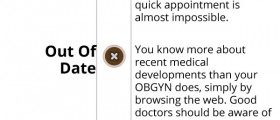
Your typical delivery won't include a lot of blood at all! But postpartum hemorrhage is a scary complication, because it is possible to bleed out in under ten minutes. If you do have a postpartum hemorrhage, you'll be thankful to have competent healthcare providers and the right treatment options by your side. While postpartum hemorrhage can't always be prevented, or predicted, there are some risk factors. Let's have a look at those:
A large baby. Twins or higher multiples. Having given birth before, especially if you have had more than five babies. Having had labor augmentation with Pitocin. Magnesium sulfate during birth. Too much amniotic fluid. A very long labor. General anesthesia during birth.Some of these factors won't come into play until you are already in labor, and will not, therefore, help you make decisions about your medical care during labor and delivery in advance. Your doctor will certainly keep those factors in mind, though. Other factors are obvious during pregnancy, and if you are at risk, you may think twice about delivering in a place without adequate care for postpartum hemorrhage. If you are thinking about giving birth at home or at a free-standing birth center, it is always a good idea to ask your midwife how she treats postpartum hemorrhages, and particularly if she has Pitocin on hand.
















Your thoughts on this
Loading...